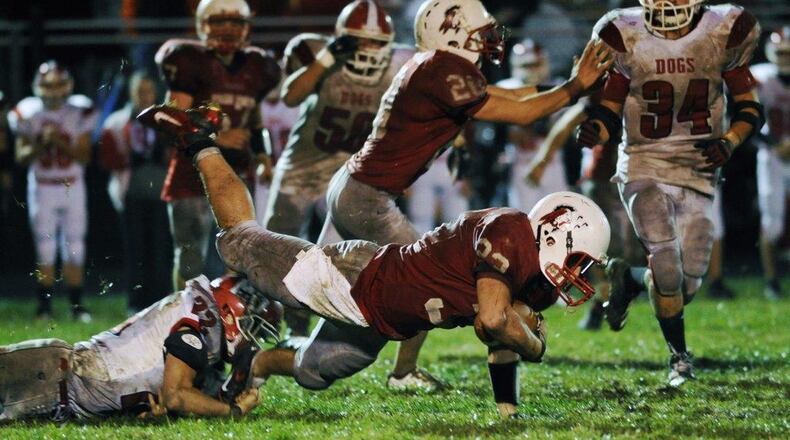More than a dozen years ago artificial turf playing fields began showing up at Southwest Ohio high schools due to enhanced affordability, though they are still pricey — ranging from $500,000 to $1.5 million.
The advantages beyond long-term cost-savings were obvious.
The plastic grass fields are more durable, take less maintenance costs and can even become revenue generators for school districts that rent out the fields to local youth and adult sports leagues. None-prep sports participants — such as gym classes and marching bands — can also use the fields nearly year around.
“It has been a tremendous positive,” said Stu Eversole, former athletic director for Lakota Local Schools and associate commissioner for the Great Miami Conference.
Eversole, whose career in local prep athletics began in the 1970s has no nostalgia for the old-fashioned grass fields prone to disintegration under rain and muddy football games.
“By mid-season your field could look like a lunar landscape,” said the former football coach.
Ross, Madison and New Miami schools all share similar budgetary challenges when it comes to trying to partner with area businesses or health care providers who help pay for fake turf fields in exchange for naming rights, advertising signage and other agreements.
They don’t have any potential financing partners, or at least none who have stepped up to date.
And they are all also largely rural, bedroom communities with few major industries, so the majority of the school tax burden is carried by individual homeowners rather than business tax revenue.
“Installing a turf athletic field would open up many opportunities for use within the Ross school district,” said Scott Gates, superintendent of Ross Schools.
“The $500,000-plus price tag is the factor that limits us moving forward as with many other districts. Connecting with a local business or medical group would afford us the leverage needed to possibly move forward but unfortunately, as of now, there are no plans,” said Gates.
Nor any plans at New Miami Schools — Butler County’s smallest enrollment district.
“New Miami is comprised of students from (rural) St. Clair Twp. and New Miami. There are few business partnerships available to the district with many of the businesses being non-franchise businesses,” said Rhonda Parker, superintendent of New Miami Schools.
Madison Schools spokeswoman A.J. Huff said, “we talk about it all the time.”
“It all comes down to money.Whether that means finding a corporate sponsor or major fund raising. In the past we have been unsuccessful in securing a corporate sponsor similar to other local (district) fields, primarily due to our rural location,” said Huff.
About the Author
